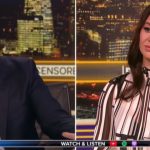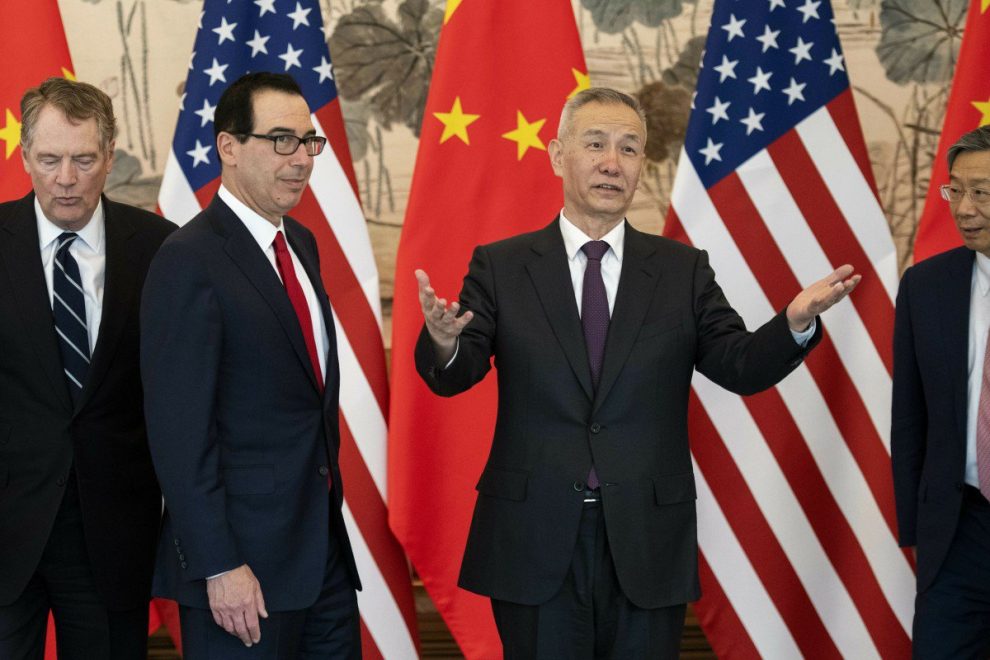The U.S. hiked tariffs on a basket of goods imported from China to 25 percent on Friday morning.
The new tariff rate, which applied to around $200 billion of Chinese goods previously subjected to a 10 percent tariff, took effect just hours after officials from the U.S and China wrapped up a “working dinner” to discuss a possible trade deal.
Last year, the U.S. government studied Chinese economic policy and concluded that the Asian nation was engaged in systematic theft of the intellectual property of U.S. companies. When the Trump administration said it would impose tariffs in response to the Chinese behavior, China cut off trade talks for months.
The U.S imposed the 10 percent tariff in September and announced the tariff would rise to 25 percent in January. Earlier last year, the U.S. had imposed a 25 percent tariff on about $50 billion of imports from China.
The tariffs were put on hold when President Donald Trump and China’s Xi Jinping agreed to a trade truce while the two nations negotiated a deal. At first, those talks were given a 90-day deadline before tariffs would rise but that deadline was waived and put on hold indefinitely after U.S. officials told the president that talks were productive.
The situation changed dramatically on Sunday. After a week of reports that the U.S might be willing to accept a deal that did not require the level of structural reforms to the Chinese economy that Trump administration officials had called for, President Donald Trump tweeted an announcement that the tariffs would go up to 25 percent on Friday and the remaining $325 billion of Chinese goods would be subject to tariffs shortly. He accused China of attempting to renegotiate the deal, going back on commitments made earlier.
Rep Nancy Mace slaps down early retirement rumor: ‘BIG FAT NO from me’
As Trump’s standoff with Maduro deepens, experts warn the next move may force a showdown
Dystopia: UK Woman Recalls Being Arrested by Multiple Officers for Hate Crime While She Was Naked, After Sending Harmless Text Message
Decomposed body found in Connecticut after standoff with man who opened fire at police
Adams issues orders blocking NYC from boycotting Israel as clash with Mamdani grows
US Institute of Peace officially renamed for Trump as White House moves to dismantle agency: ‘Congratulations’
Feds arrest felon illegal immigrant after seizing tens of millions in meth stashed in blackberries
Elderly Texas woman learns fate for distributing 150,000 doses of fentanyl through the mail
Model, DJ linked to violent Tren de Aragua gang leader sanctioned by Trump administration
Social media reactions reveal why both parties celebrated after GOP candidate won special election
Prince William Plans to ‘Slash and Burn’ Royal Establishment, Harry and Meghan: Report
Ghislaine Maxwell pushes back on full transparency for Epstein files
Trump warns US may launch land operations inside Venezuela ‘very soon,’ says regime sent ‘killers’ to America
Ex-CNN Anchor Who Quit News Industry Under Cloud of Controversy Is Now Dead
Americans want US to lead globally but doubt military can win major wars overseas, survey finds
Behind the scenes, the push for higher tariffs began on Friday night. A diplomatic cable from Beijing arrived in Washington with systematic edits the draft trade agreement that shocked U.S. officials because it appeared to take back so much of what they had thought China had already agreed to.
Reuters reported that in each of the seven chapters of the draft trade deal, China had deleted its commitments to change laws to resolve core U.S. complaints: Theft of U.S. intellectual property and trade secrets; forced technology transfers; competition policy; access to financial services; and currency manipulation. China’s position was that it would adopt policies to meet the demands but not actually change its laws.
The change in China’s stance on tariffs appears to reflect Chinese domestic political pressure. China’s nationalist hawks considered the demand for actual legal changes unacceptable, according to people familiar with the matter. Some have argued that such a public change would make China look weak.
Some in the U.S. and China speculated on Sunday and Monday that Trump’s Sunday tweets might be just an empty threat intended to give U.S. negotiators additional leverage in the talks. That raised the possibility that the tariffs might not actually be raised. Financial markets in the U.S. seemed remarkably calm on Monday.
That changed Monday evening after Lighthizer and Treasury Secretary Steven Mnuchin spoke to reporters. Both men explained that China’s backtracking had resulted in the need to push tariffs higher. Lighthizer said he would be filing the paperwork as soon as possible and that tariffs would go up at midnight Friday.
Trade talks resumed Thursday but were brief. After less than 2 hours of talks at the office of the U.S. Trade Representative, officials from the U.S. and China went to dinner at a nearby restaurant. Meanwhile, rumors circulated on Wall Street that Trump would speak to Xi Jinping over the phone on Thursday, sending the prices of stock futures higher.
After a brief hesitation following the announcement of the higher tariffs, China confirmed it would still send officials to Washington to meet with their American counterparts.
Story cited here.
























